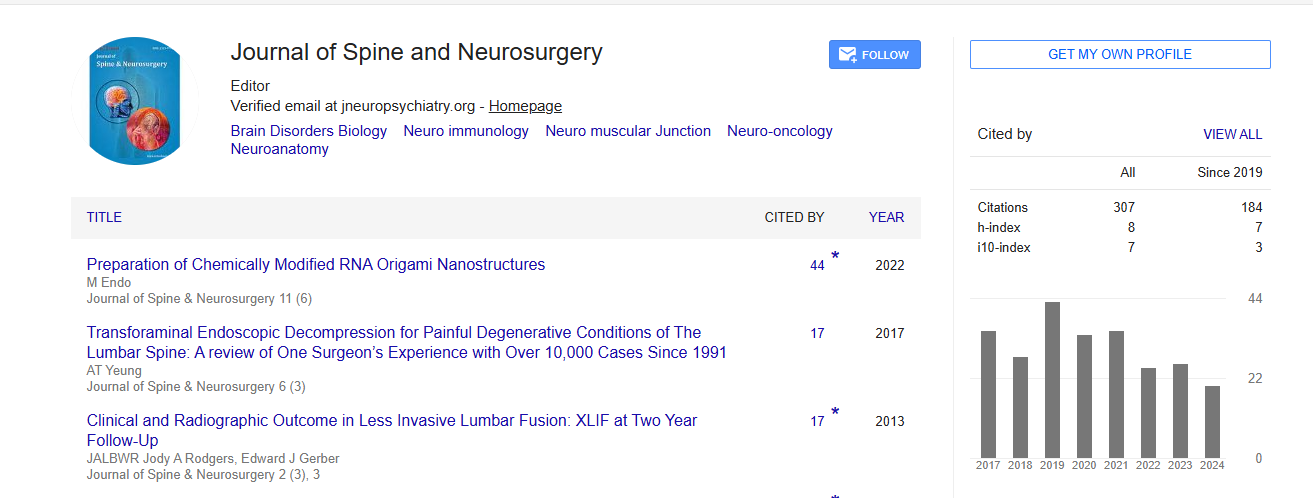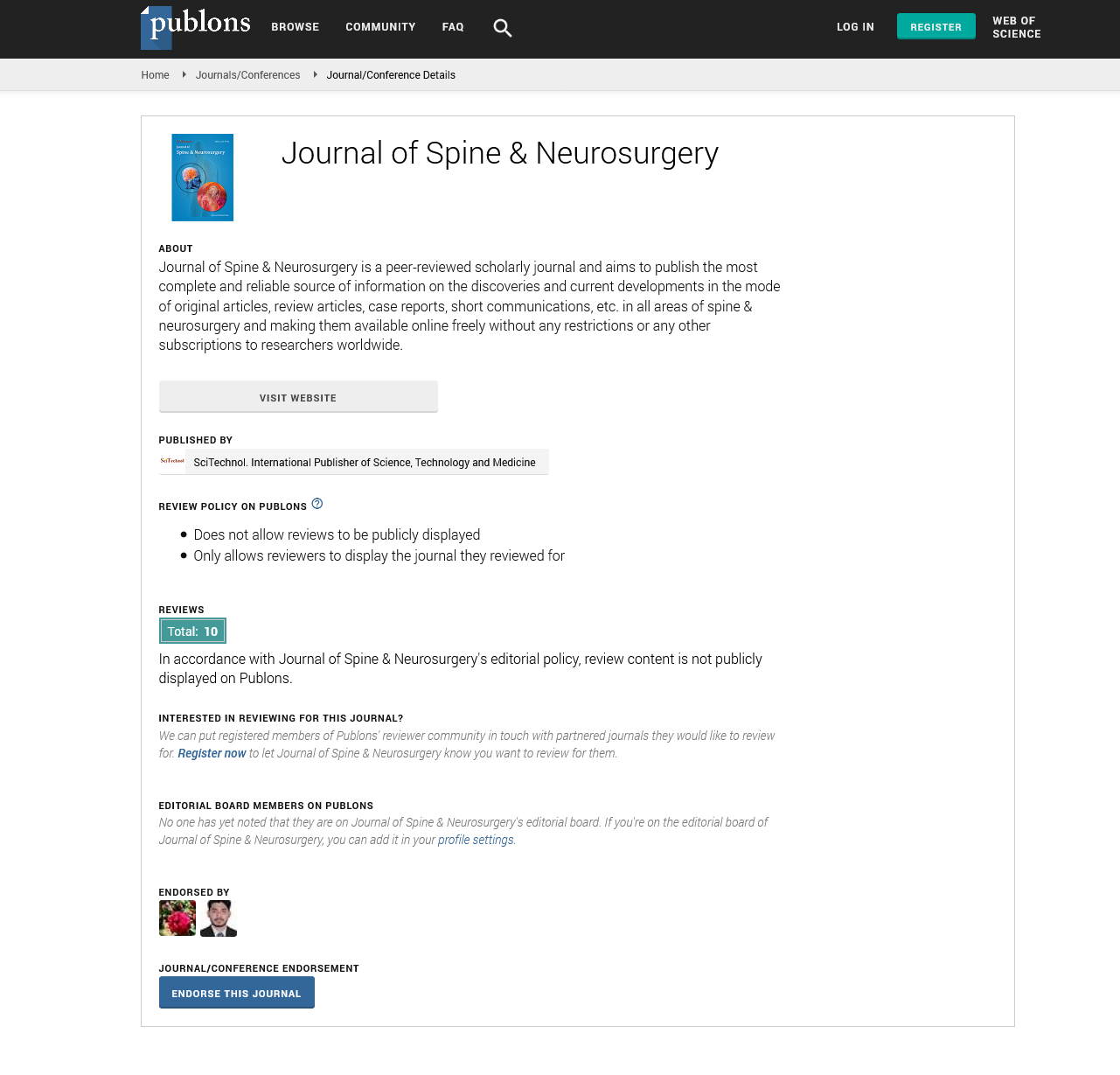Iatrogenic lumbar subarachnoid hemorrhage as a complication of repeated attempts of lumbar puncture
Soon Yee Tan, Siew Hong Yiek and Wei Chih Ng
Sibu Hospital, Sarawak, Malaysia
: J Spine Neurosurg
Abstract
Lumbar Puncture (LP) is a common bedside procedure performed for both diagnostic and therapeutic purposes. Injury to epidural venous plexus with resultant epidural hematoma is usually benign and self-limiting. However, lumbar Subarachnoid Hemorrhage (SAH) is a rare complication of LP resulting from injury to the spinal radicular arteries, usually with contributing factors from coagulopathy and anticoagulant therapy. We report a case of 56 year-old gentleman with underlying T-cell acute lymphoblastic leukemia undergoing chemotherapy. He initially presented to medical team with progressive multiple Cranial Nerves (CNs) deficit consisting of CNs 6, 7, 9, 10 and 12, which were thought to be due to leukemic Central Nervous System (CNS) infiltration, tuberculous or viral infection. Multiple attempts of LP were performed to obtain Cerebrospinal Fluid (CSF) for diagnostic purpose but all returned as dry taps, with minimal blood oozing from LP sites. The patient subsequently developed acute onset paraparesis, urinary and bowel dysfunction a day after. Clinically power was reduced from bilateral L2 downwards with areflexia, lax anal tone and weak bulbocavernosus reflex. His blood parameters showed slightly deranged International Normalized Ratio (INR) of 1.21 and mild thrombocytopenia with platelets of 148103/uL. MRI Lumbosacral showed extensive intra-dural hematoma from L1 downwards occupying the whole thecal sac. A diagnosis of cauda equina syndrome secondary to iatrogenic lumbar intra-dural hematoma was made for which urgent partial L2, L3-L4 laminectomy was performed. Intra-operatively dense arachnoid adhesions noted around lumbosacral nerve roots circumferentially with thickened arachnoid membranes representing SAH. Post-operatively, he recovered well and started ambulating on day 5. He was discharged with residual paraparesis and normal urinary and bowel functions. In conclusion, lumbar SAH is a rare but potentially debilitating complication of LP, therefore it must be considered in patient who developed acute flaccid paraparesis and cauda equina syndrome shortly after LP. Early recognition with prompt surgical decompressed laminectomy is essential to prevent permanent neurological deficits.
Biography
Soon Yee Tan is a Neurosurgical Trainee currently working in Neurosurgery Department, Sibu Hospital in the state of Sarawak, Malaysia. He has acquired his basic MBBS degree from University of Malaya, Malaysia and Post-basic MRCS degree from the Royal College of Surgeons of Edinburgh. He has special interest in spinal neurosurgery and looking to pursue further in that particular field.
E-mail: tansoonyee@gmail.com
 Spanish
Spanish  Chinese
Chinese  Russian
Russian  German
German  French
French  Japanese
Japanese  Portuguese
Portuguese  Hindi
Hindi 
